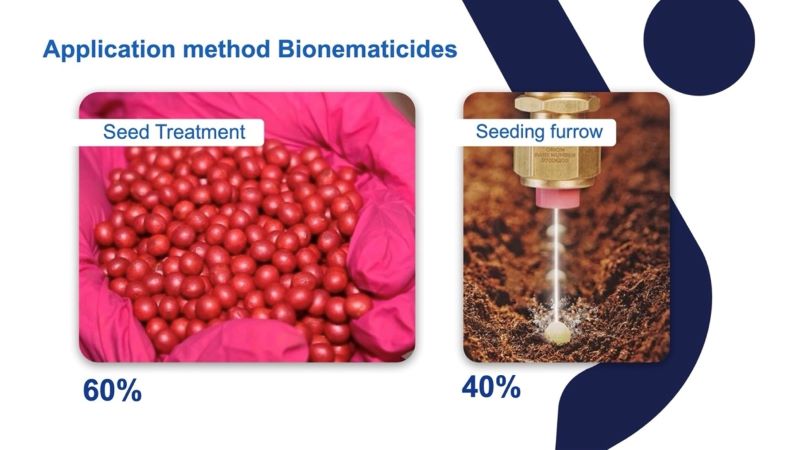Plant-parasitic nematodes—tiny soil pests that feed on crop roots—are silent threats to global agriculture, causing $150 billion in annual losses by damaging roots, cutting nutrient absorption, and enabling fungal infections. For agricultural powerhouse Brazil, these pests have spurred the development of advanced biocontrol strategies, offering a sustainable alternative to traditional chemicals.
Nematodes: Brazil’s Agricultural Crisis
Nematodes top Brazil’s most destructive crop pests, targeting soybeans, corn, and sugarcane. Species like root-knot, root-lesion, and cyst nematodes harm roots from seedling stages, leading to stunted growth and yield drops.
Brazil’s climate worsens the issue: year-round high temperatures (up to 46°C in summer, 26°C in winter) keep nematodes active, while intensive rotations (soybean-corn-cotton) provide nonstop host plants. New species like Aphelenchoides besseyi and Helicotylenchus dihystera—with broad host ranges—add to detection and control challenges.
Staphyt’s data shows nematodes cost Brazil $5.5–12 billion yearly (7% of agricultural output), with soybeans alone losing $4–5 billion. Over 95% of 20,000+ national field samples tested positive for nematodes, underscoring their reach.
Farmers’ Control Challenges
Nematodes’ underground habitat delays detection—farmers often notice damage only after major yield losses, limiting early action. Subtle root symptoms also hinder diagnosis without training.
Economic pressures add hurdles: the profitable soybean-corn-cotton rotation fuels nematode growth, but farmers resist changing it for fear of lower income. Traditional chemical nematicides are phased out over environmental concerns and strict rules, while new chemicals face long approvals and limited efficacy.
Bio-nematicides have filled the gap: adoption in Brazil jumped from 27% three years ago to over 40% today, becoming key to nematode management.
Bioagents: Fast-Growing Pest Fighters
Brazil leads in bio-agriculture R&D, with over 50% of agricultural research funds going to bioagents. The bio-agent market hits $20 billion (4–5% of Brazil’s pesticide market) and grows 15–20% yearly—far above traditional chemicals’ 4%.
Tighter rules on toxic chemicals have boosted bio-agent registrations: 12+ new bio-nematicides were approved in 2024.
Microbial ingredients expanded from a few 15 years ago to 99 registered strains, with Bacillus and Trichoderma as top choices. Bacterial and fungal agents are used equally, and multi-strain products now target complex nematode populations.
Local firms (Ballagro, Lallemand, Vittia) drive development, while global agrochemical companies join via partnerships. Staphyt collaborates internationally to speed registrations, innovation, and competitiveness.

Field Results: Data Back Bio-Solutions
As nematodes spread, Brazil’s bio-nematicide use focuses on field testing. Staphyt’s national test stations evaluate two main application methods:
- Seed treatment: Preferred by large growers (10,000–20,000 hectares) for no extra water needs and mechanized compatibility, but limited by seed coating space (inoculants/adjuvants leave little room for nematicides).
- Furrow application: Flexible for multi-pest control; many farmers combine it with seed treatment to boost coverage.
Trials show bio-nematicide-treated plots yield 6–10% more, building farmer trust.

Future: Sustainable Management
Soybeans and corn remain Brazil’s staples, but nematodes threaten yields. Even crop switches fail, as nematodes adapt and cross-infect.
Staphyt Brazil’s Dr. Luiz Antonio Alves Jose notes nematode eradication is impossible—management is key. He urges Integrated Nematode Management (INM): combining crop rotation, resistant varieties, and bio-agents.
Bio-control is not a cure-all, but its growth in Brazil brings environmental and yield benefits. Dr. Jose says long-term success needs two steps: ongoing tech innovation (localized formulations, precise application) and farmer education. This model can control nematodes, protect yields, and drive sustainable agricultural change.











